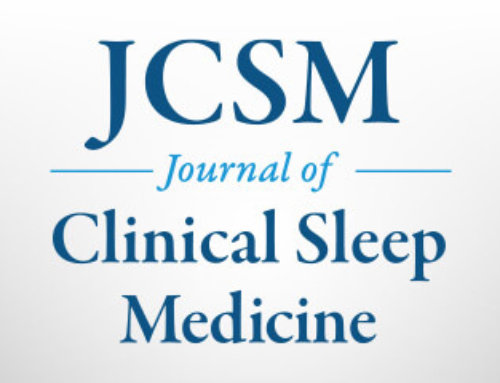EMBARGOED FOR RELEASE: 12:01 a.m., June 7, 2010
CONTACT: AASM Director of Communications Kathleen McCann
708-492-0930, ext. 9316
WESTCHESTER, IL – The prevalence of mild sleep-disordered breathing in young children may fluctuate seasonally, suggests a research abstract that will be presented Monday, June 7, 2010, in San Antonio, Texas, at SLEEP 2010, the 24th annual meeting of the Associated Professional Sleep Societies LLC.
Results indicate that in summer and fall the prevalence of mild sleep-disordered breathing in elementary-school children increased steadily from June (21.6 percent) through September (37.2 percent) and then decreased from September through November (6.3 percent). Controlling for potential confounders such as age, body mass index, gender and race showed that the odds of mild sleep-disordered breathing in every month was significantly lower than in September.
“What surprised us most was the dramatic impact that season had on the prevalence of SDB,” said principle investigator Edward Bixler, PhD, professor and vice chair for research in the department of psychiatry at Penn State University in Hershey, Pa. “The results are significant because they underscore the importance of evaluating a child’s sensitivity to seasonal allergies when diagnosing and treating a child for SDB.”
The study involved a random sample of 687 children in grades K-5. Their parents completed a brief questionnaire, and each child was evaluated between June and November during an overnight sleep study in the sleep laboratory. Mild sleep-disordered breathing was defined as having an apnea-hypopnea index (AHI) of one to five breathing pauses per hour of sleep.
In a study published in the June 2009 issue of the journal SLEEP, Bixler and his research team reported that nasal problems such as chronic sinusitis and rhinitis are significant risk factors for mild sleep-disordered breathing in children. However, the extent to which allergies may promote a seasonal variation in sleep-disordered breathing still needs to be determined.
The researchers added that the results may have implications for the development of pharmacologic treatment strategies for mild sleep-disordered breathing in children.
The study was supported by the National Center for Research Resources and the National Heart, Lung, and Blood Institute of the National Institutes of Health.
The American Academy of Sleep Medicine reports that approximately two percent of otherwise healthy young children have obstructive sleep apnea, a common form of SDB that occurs when soft tissue in the back of the throat collapses and blocks the airway during sleep. Most children with OSA have a history of snoring that tends to be loud and may include obvious pauses in breathing and gasps for breath. Parents often notice that the child seems to be working hard to breathe during sleep.
The SLEEP 2010 abstract supplement is available for download on the website of the journal SLEEP at https://www.journalsleep.org/ViewAbstractSupplement.aspx.
A joint venture of the American Academy of Sleep Medicine and the Sleep Research Society, the annual SLEEP meeting brings together an international body of more than 5,000 leading clinicians and scientists in the fields of sleep medicine and sleep research. At SLEEP 2010 more than 1,100 research abstract presentations will showcase new findings that contribute to the understanding of sleep and the effective diagnosis and treatment of sleep disorders such as insomnia, narcolepsy and sleep apnea.
Abstract Title: Seasonal variation in prevalence of mild SDB in a population sample of children
Abstract ID: 0392
Category: Sleep Disorders – Breathing
Presentation Date: Monday, June 7, 2010
Presentation Type: Poster – #163
Presentation Time: 10:30 a.m. – 12:30 p.m.
###








